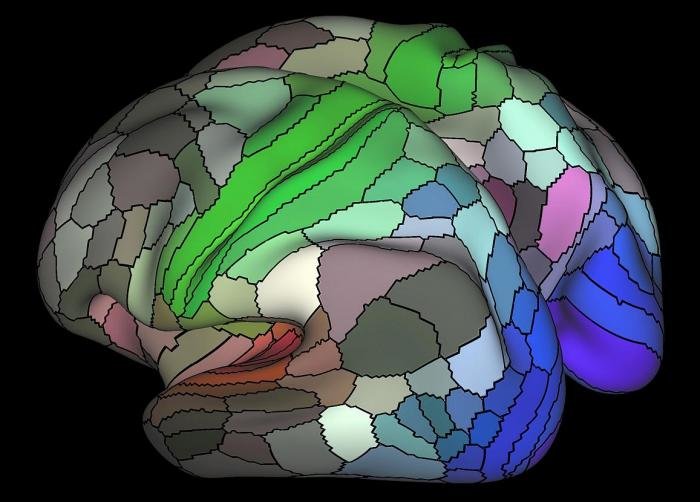
The most complete map of the cerebral cortex ever to be charted has been unveiled this week in Nature. No less than 97, distinct, previously undescribed regions have been found.
The cerebral cortex - the outer portion of the mammalian brain - is a 2-4-millimeter thick layer of gray matter.
This densely folded formation of cells is heavily involved in a number of tasks, including attention, memory, perception, consciousness, awareness, thought, and language.
Over the last century, neuroscientists have divided the cortex into ever smaller sections of discrete functionality.
Although the brain is known to function, very much, as a whole, dividing it into bite size chunks helps understand how it can create such complex activity.
Below is a short video, produced by Nature, which briefly explains the new findings:
Breaking research provides us with the most complex map of the cerebral cortex to date.
Early studies of the cortex and attempts to understand its organization have relied on single measures - for instance, examining cell types in postmortem brains.
Although these studies have allowed scientists to describe distinct areas, the accuracy has been called into question, and the ability to compare structures between brains has been lacking.
Software, scans, and brain maps
Scientists, funded by the National Institutes of Health through its Human Connectome Project (HCP), set out to bring these blurred images of the brain into much sharper focus.
To develop a more detailed picture of cortical regions, they used a number of cutting-edge techniques and overlaid them.
The work was carried out by David Van Essen, Ph.D., and Matthew Glasser, Ph.D., of Washington University in St. Louis, MO, and their colleagues.
The researchers developed software capable of mapping areas of the brain by collating data from a large number of noninvasive but precisely aligned magnetic resonance imaging (MRI) brain scans.
In all, they used scans from 210 healthy participants. The imaging technology charted cortical architecture and its activity, connectivity, and topography. Measures included cortex myelin content - a fatty component important for signal transduction - and the thickness of the cortex. Additionally, functional MRI (fMRI) scans were taken both during tasks and while at rest.
Dividing the mind
Glasser and his team looked for areas of the cortex where two or more properties changed; these became the borders on the map. He says: "If you crawl along the cortical surface, at some point you are going to get to a location where the properties start changing, and where multiple independent properties change in the same place."
The best map of the cortex prior to this advance described 83 areas, all of which were reconfirmed by the new methodology, with the addition of 97 areas that are entirely new to science.
Each of the 97 new regions contains cells with similar connectivity, structure, and function that differs from their neighbors.
The findings were then double checked using another sample of 210 healthy participants. When running the software on fresh brains, some of the cortical regions were found to be in slightly different positions or of subtly different sizes in some individuals. However, the software was still capable of successfully adjusting for these changes and mapped them accurately.
"The ability to discriminate individual differences in the location, size, and topology of cortical areas from differences in their activity or connectivity should facilitate understanding of how each property is related to behavior and genetic underpinnings."The map has the potential to answer, or at least help answer, some of the more esoteric questions neuroscience has to offer about interpersonal differences; questions relating to interpersonal differences, and intellectual and creative abilities, for instance.
Matthew Glasser, Ph.D.



Comment: Related articles: